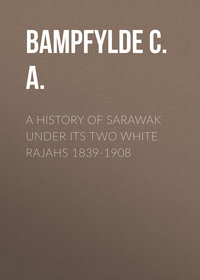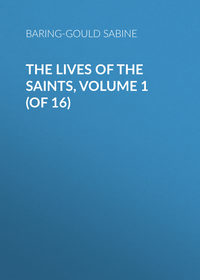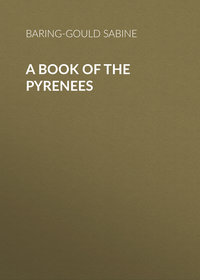 полная версия
полная версияA Book of North Wales
This is, however, a myth. After the completion of his great achievement for the benefit of London, Sir Hugh reclaimed Brading Harbour, in the Isle of Wight, and undertook the working of Welsh mines, whose tin and lead brought in a large revenue, but he sank much money unprofitably in looking for coal near Denbigh. He died at the age of seventy-six, leaving large sums to his children, and an ample provision to his widow. When James I. created him a baronet he remitted the customary fees, amounting to over a thousand pounds – a very large sum of money in those days.
But he was not the only Myddelton who was a benefactor. In 1595 his brother Sir Thomas purchased Chirk Castle and Denbigh from the Crown. He provided the Welsh “nation” (in 1630) with the first portable edition of the Scriptures at his own expense. His brother William gave the Welsh a metrical version of the Psalms.
In Nantglyn, at Plas, five miles from Denbigh, was born Mrs. Jordan the actress, if we may trust local authorities. She made her first appearance at Drury Lane in 1785, and appeared as Peggy in The Country Girl, driving her audience frantic with delight. How she could act in serious parts Charles Lamb has described in one of the most exquisite passages of the Essays of Elia. According to some accounts, she was not Welsh, but Irish; but this opinion seems to be due to her having made her début at Dublin. Her real name was Dorothy Bland, but she assumed the name of Frances. To her we owe “The Blue Bells of Scotland,” one of those rare instances of a woman composing a melody that has taken hold and remained. It is curious that a Welsh girl – or Irish, if the Waterford claims to her be maintained – should have contributed a national air to Scotland. Mrs. Jordan was not really beautiful, but she had a most engaging manner and expression of face. Her voice was not only sweet, but her articulation was distinct. The last song she sang in public on the stage was —
“Last night the dogs did bark,I went to the gate to see,And ev’ry lass has her spark,But nobody’s coming for me.O dear! what can the matter be?O dear! what shall I do?Nobody’s coming to marry me,Nobody’s coming to woo!”– one of those delightful English airs that will never die. This was shortly before her eldest son, George Fitzclarence, was born – January 29th, 1794.
Mrs. Jordan acquired a good deal of money by her profession, and she was not an extravagant person. She had a large family, and was a good mother. A person who had married one of her daughters had involved her in a debt of £2,000, and this so preyed on her spirits that it shortened her days. She withdrew from England and settled at S. Cloud, near Paris, and died there July 5th, 1816, aged fifty, and is buried at S. Cloud.
Llanrhaiadr is three miles from Denbigh. The church has some fine old glass in the east window, representing a Jesse tree. There is a wonderful genealogical tombstone in the churchyard to a certain John ap Robert, ap David, ap Gruffydd, ap David Vaughan, and so on back to Cadell Deyrnllwg, king of Powys.
A curious story is connected with an interment in this churchyard.
“Anne Parry had opened her house for the preaching of the Methodists in this place, and originated a Sunday-school in the neighbouring village. She ended a life of laborious benevolence by a peaceful death, and forty-three years after her decease, on the occasion of her son’s burial in the same tomb, her coffin was opened, and the body of this excellent woman was found to be in a perfect state of preservation, undecayed in the slightest degree, and her countenance bearing the hues of living health. The very flowers which had been strewed upon her body, it is said, were as fresh in colour, and as fragrant in odour, as when they were first plucked from their native boughs. The body of this lady was exhumed about three years afterwards (in 1841), and was nearly in the same state of preservation. This was corroborated by the mayor of Ruthin in 1841. The compiler of this account received the same information on the very day the lady had been re-interred, not only from the parish clerk and the mayor of Ruthin, but from several other parties who saw the body.”4
Some allowance must be made for exaggeration here. That a body in certain undetermined circumstances may remain undecomposed is doubtless true, but the statement relative to the flowers must be dismissed as impossible.
Between Denbigh and Ruthin, and three miles from the latter, is Llanynys. Here, at Bachymbyd, an ancient mansion, are “The Three Sisters,” noble chestnuts planted by the three daughters of Sir William Salusbury. The property passed into the hands of Sir Walter Bagot through a singular circumstance. He had been shooting in the neighbourhood, and a favourite pointer strayed, and he could not recover it. Some time after Sir William Salusbury found the dog, and sent it to Sir Walter with his compliments. This led to an exchange of compliments, and next time Sir Walter Bagot was in the neighbourhood he called at Bachymbyd to express his gratitude. He there met the daughters of Sir William, and fell in love with one of them, proposed, and was accepted. Before the lady left for her new home she and her sisters planted these trees.
Ruthin is a pleasant little town, with its castle, but the latter is not old, having been almost wholly rebuilt. Portions of the earlier castle still remain.
The castle was founded in 1281 by Edward I., and was granted to Reginald de Grey. This man did his utmost to exasperate the Welsh to fresh insurrection, and Peckham, Archbishop of Canterbury, made a journey into Wales to mediate between the King and Llewelyn, and allay the irritation. He complained to Edward, but in vain, of the rapacity of Reginald, whom he accused of committing the most flagrant acts of injustice, of depriving officers of the places they had purchased and of commissions that had been granted to them, of revoking just sentences when they jarred with his interests, and of compelling the peasantry to plough his lands without wages.
A contest about a common called Croesau, between Ruthin and Glyndyfrdwy, led to the insurrection of Owen Glyndwr.
During the reign of Richard II. a controversy had arisen relative to rights over this common. Reginald de Grey, who held Ruthin Castle, had claimed it. Owen disputed the claim, and gained his suit in a court of law. But no sooner was the usurper Henry of Lancaster on the throne than De Grey took possession of the common. Glyndwr appealed to Parliament, but his appeal was dismissed. Not satisfied with this infringement of his neighbour’s rights, De Grey resolved on utterly ruining him. Henry had summoned Owen among his barons to attend him on his expedition to Scotland, and had confided the summons to De Grey to deliver. De Grey treacherously withheld it, and then represented Owen as wilfully disobedient. Owen was accordingly sentenced, unheard, to be deprived of his lands, and De Grey seized them.
The Bishop of S. Asaph appealed to Parliament against this injustice, but in vain; and he warned it against the imprudence of exasperating an honourable and loyal man of extended influence, and driving him into rebellion to maintain his just rights. But the Lords scoffingly replied that “they had no fear of that pack of rascally, bare-footed scrubs.”
De Grey surrounded Owen’s house, but failed to capture him. He had attempted a most treacherous plan. He sent to Owen to offer to dine with him and talk over matters for a reconciliation. Owen consented on condition that De Grey came with only thirty followers, and these unarmed. De Grey accepted the terms, but ordered a large force to approach and surround the house while he was within. Glyndwr, however, knew his man, and he had set his bard Iolo Goch to watch. Iolo saw the approach of men-at-arms, so entering the hall he struck his harp and sang: —
“Think of Lleweni’s chief, no slightA murder on a Christmas night.The blazing wrath of Shrewsbury keep,The burning head’s avenging heap.”Owen took the hint; he escaped.
Owen now proclaimed himself Prince of Wales, and called on all true-hearted Welshmen to rally to his standard. His first exploit was the capture of Ruthin in September, 1400. His men had concealed themselves in the thickets of Coed Marchan, near the town, and when the gates were thrown open for a fair, some made their way within disguised as peasants, and kept the gates open for their confederates. Glyndwr’s men rushed in, fired the town in four places, and slaughtered every Englishman they met. Then, laden with booty, they retreated to the mountains. Lord de Grey collected a force and marched against Glyndwr, but fell into an ambush, and was taken and carried off to the wilds of Snowdon, where Owen, before he would let him depart, forced him to marry his daughter Jane and to pay for his ransom 10,000 marks, which compelled him to sell his manor of Hadleigh, in Kent.
It was in consequence of Glyndwr’s insurrection that the parliament of 1401 passed a series of the most oppressive and cruel ordinances ever enacted against any people – prohibiting the Welsh from acquiring lands by purchase, from holding any corporate offices, from bearing arms in any town; ordering that in lawsuits between an Englishman and Welshman, the former could only be convicted by English juries; disfranchising every English citizen who should marry a Welshwoman, and forbidding Welshmen to bring up their children to any liberal art, or apprentice them to any trade in any town or borough of the realm.
The barony of Grey de Ruthin was made out by patent to Reginald and to his heirs, without specifying that these should be males; it is therefore one of the few that devolve through heiresses.
In S. Peter’s Square is the picturesque timber and plaster house in which was born Gabriel Goodman, Dean of Westminster for nearly the whole of Elizabeth’s reign, and one of Bishop Morgan’s helpers in the translation of the Bible into Welsh. In front of it, built into the platform, is the Maen Huail. On this stone, according to tradition, King Arthur cut off the head of Huail, brother of Gildas. He was a quarrelsome, turbulent man, who, instead of serving against the Saxons, was engaged in broils against King Arthur. But his death was due to another cause.
Huail was imprudent enough to court a lady of whom Arthur was enamoured. The king’s suspicions were aroused and his jealousy excited; he armed himself secretly, and intercepted Huail on his way to the lady’s house. Some angry words passed between them, and they fought. After a sharp combat Huail wounded Arthur in the thigh, whereupon the contest ceased, and reconciliation was made on the condition that Huail should never reproach Arthur with the advantage he had obtained over him. Arthur returned to his palace at Caerwys, in Flintshire, to be cured of his wound. He recovered, but it caused him to limp slightly ever after. A short time after his recovery Arthur fell in love with a lady at Ruthin, and in order to enjoy her society disguised himself in female attire, and so got among her companions. One day when this lady and her maids and the disguised Arthur were dancing together, Huail saw him. He recognised him at once, and with a sneer on his lips said “the dancing might pass muster but for the stiff thigh.” Arthur overheard the remark, and exasperated at the allusion, and at having been detected in such an undignified disguise, withdrew from the dance, and after having assumed his royal robes, summoned Huail before him, and ordered his head to be struck off in the midst of Ruthin, on the stone that now bears his name.
Gildas was in Ireland at the time; he at once hasted to Wales, where he raised such a storm, and roused so many enemies against Arthur, that the king was obliged to compromise matters, and he made over to Gildas and his family some lands in Denbighshire as blood-fine, after which Gildas gave him the kiss of peace.
Ruthin Church is puzzling at first sight. It was made collegiate in 1310 by John, son of Reginald de Grey. It consisted originally of two churches, the parochial church of S. Peter, formed of one long nave and tower, and beyond the tower the collegiate church.
“The choir being destroyed,” says the late Professor Freeman, “the tower forms the extreme eastern portion of the northern body. Though the upper part has been rebuilt, the arches on which it rests happily remain unaltered. In this lies the great singularity of the church. There are not, and never could have been, any transepts, but still arches, almost like those of a lantern, are thrown across the north and south sides. These, however, are merely constructive or decorative, as it is clear they never were open. This arrangement is exceedingly rare.”
The roof is said to have been given by Henry VII. when he bought the lordship of Dyffryn Clwyd. On it are nearly five hundred different devices. An aisle has been added to the church, much altering its character.
In the chancel is the tombstone of one John Parry, 1636, with the inscription “Hic jacet et (sedes cum sua) jure jacet.” (“Here he lies, and since the pew is his own, he lies here by right.”)
The range of the Clwydian Hills to the east is in several places surmounted by camps, that have been occupied by succeeding peoples, for in some are found flint weapons, bronze, later Roman ware and coins, and even mediæval pottery.
The highest point is Moel Famma. Moel Fenlli is the nearest to Ruthin, and takes its name from Benlli, king of Powys, who was supplanted by Cadell Deyrnllwg. He is reported to have retired to this stronghold. The story is this.
Germanus – not, I hold, the Bishop of Auxerre, but his namesake, a nephew of S. Patrick, and finally Bishop of Man – was in western Britain. He came to Pengwern or Shrewsbury, and asked to be admitted. But Benlli refused, and Germanus was forced to spend the night outside the walls. A servant of Benlli, named Cadell, disregarding his master’s orders, furnished the saint and his party with food. According to the legend, fire fell from heaven and consumed the town, and Benlli escaped with difficulty. Then Germanus set up Cadell to be king of Powys in his room.
What seems actually to have happened was that Benlli, with the pagan party, clung to the side of Vortigern, and Germanus, stirred up Cadell, a petty prince of Powys, against him, and that Pengwern was taken, and Cadell elevated to be king in the room of Benlli.
Legend has been busy with the deposed king. It is said that in his camp he suffered tortures from rheumatism and wild-fire, and that he sought relief from S. Cynhafal, patron of Llangynhafal hard by, who refused it to him, as he was a renegade to paganism. Then Benlli in his pain sought ease in the cooling waters of the River Alun, but the stream likewise refused its aid, and dived underground. Again Benlli plunged in, and the water dived again. He tried a third time, and the river a third time retreated below the surface. The story has been invented to explain the fact that the Alun actually does thrice disappear in its bed.
At Derwen, in the church, there is a good screen, but the finest of all in this district is that of Llanrwst. In most of the Welsh screens the openings are rectangular, with some dainty tracery introduced at the top. But at Llanrwst the openings are pointed. In the Devon and Cornish and Somersetshire screens these openings are mere Perpendicular windows, and all in each screen are alike in tracery, and this tracery is very much the same in all. But at Llanrwst the design in each window of the screen is different; there are, however, no mullions. The face of the rood-loft is also rich, and only needs the filling in of the niches with figures to make it complete.
Llandegla is interesting only on account of its spring, now all but choked up, on Gwern Degla, about two hundred yards from the church. Pennant in his Tours writes: —
“The water is under the tutelage of the Saint (S. Tecla); and to this day is held to be extremely beneficial in the clwyf Tegla, S. Tecla’s disease, or the falling sickness. The patient washes his limbs in the well, makes an offering into it of fourpence, walks round it three times, and thrice repeats the Lord’s Prayer. These ceremonies are never begun till after sunset. If the afflicted be of the male sex, he makes an offering of a cock; if of the fair sex, of a hen. The fowl is carried in a basket, first round the well, after that into the churchyard, when the same orisons, and the same circumambulations are performed round the church. The votary then enters the church, gets under the Communion Table, lies down with the Bible under his or her head, is covered with the carpet or cloth, and rests there till break of day; departing after offering sixpence, and leaving the fowl in the church. If the bird dies, the cure is supposed to have been effected, and the disease transferred to the devoted victim.”
This is now a thing of the past. But the oblation of cocks and hens still goes on in Brittany. At Carnoet, near Carhaix, is a chapel of S. Gildas. At his pardon in January the peasants bring fowls, and in the chapel are three ranges of hutches, in which they are placed, and where they remain clucking and crowing during Mass, so that often the voice of the celebrant is drowned. After service the fowls are sold by auction, and the money obtained goes for the maintenance of the chapel. On the floor of the chapel is a stone sarcophagus, in which sick people were wont to lie in the hopes of thereby recovering. It was, one would suppose, kill or cure. They also offered a cock or hen, but this has gone out of use in Brittany as in Wales. No one now sleeps under the altar at Llandegla, or in the stone coffin at Carnoet.
CHAPTER XI
LLANGOLLEN
The Vale of Llangollen – S. Collen – A Breton Llangollen – Dinas Bran – Maelor – The old maids – The church – Vale Crucis – The pillar of Eliseg – Plas Eliseg – Owen ab Cadwgan and Nest – End of Owen – Corwen – Church rebuilt – English and French capitals to pillars – Inscribed stones – Cup-markings – Caer Drewyn – Owen Gwynedd and Henry II. – Rûg – Gruffydd ab Cynan – Image of Derfel Gadarn – Burning of Friar Forest – Pennant Melangell – Patroness of hares – The Welsh harper – Different kinds of harps – Satire on harpersTHE Vale of Llangollen is proverbial for its beauty, and possibly because it has been so spoken, written, and sung about, it disappoints at first sight, but it is only at first sight that it does disappoint. Its beauties grow on one. The really finest portion is at Berwyn, which is the next station on the line to Bala, and not at the town that gives its name to the vale.
The mountains are not very lofty, rising only to 1,650 feet, but the Eglwyseg rocks redeem them from being regarded as hills. Llangollen owes its name to a founder named Collen in the seventh century. He descended from Caradog Freichfras who drove the Irish out of Brecknock, and whose wife, the beautiful and virtuous Tegau Eurfron, has been made famous by the ballad of “The Boy and Mantle,” which is in Percy’s Reliques.
A wonderful Life of Collen exists in Welsh that has not as yet been translated. It relates how that he went abroad and studied at Orleans, then he returned to Britain and settled at Glastonbury, where he was elected abbot. This post he soon resigned for another that was “heavier and harder,” which consisted principally in going about preaching. He again got tired of this, and returned to Glastonbury, where everything went on smoothly for five years, when he happened to quarrel with the monks, for he was a peppery Welshman; and cursing them, he left for Glastonbury Tor, and made for himself a cell under a rock, where he could grumble to himself unmolested.
As he was in his cell one day, he heard two men talking about Gwyn ab Nudd, and saying that he was king of the under-world and of the fairies. Collen put his head out, and told them to hold their peace and not speak about these beings as if they were deities, for in fact they were only devils.
“You had best not use any disrespectful words about Gwyn,” retorted they, “or he will serve you out for doing so.”
Now at dead of night Collen heard some raps at the door of his habitation, and in answer to a call, “Who is there?” received the reply, “It is I. Gwyn ab Nudd, king of the nether world, has sent me, his messenger, to bid you meet him at the top of the hill.”
“I won’t go,” retorted the saint.
Again the messenger summoned him, and still Collen refused to be drawn.
Then the messenger said, “If you don’t come, Collen, it will be the worse for you.”
This disconcerted him; so, taking some holy water with him, he went. On reaching the top of the tor, Collen beheld the most beautiful castle that he had ever seen, manned by the best-appointed soldiery. A great many musicians, with all manner of instruments, made glorious music. About the hill were young men riding horses; at the palace gate handsome sprightly maidens – in fact, every element becoming the retinue and appointments of a great monarch.
Collen, carrying his pot of holy water, was invited to enter; he obeyed, and was ushered into a banqueting hall where he saw the king seated in a chair of pure gold. Gwyn very graciously invited Collen to take a seat and refresh himself at the table, whereon were all kinds of dainties. Collen replied churlishly, “Bah! I don’t browse on leaves.”
“Hast thou ever seen,” said the king, “men better dressed than these my servants in red and blue?”
“The clothing – such as it is – is good enough.”
“Such as it is!” repeated the king. “What do you mean?”
“Red for fire, blue for cold,” replied Collen, and he dashed the pot of holy water in the king’s face and the liquid was splashed about on all sides. Instantly everything disappeared, and Collen was alone on the tor and the stars were shining down on him out of a frosty sky.
That is the story as he told it to the monks of Glastonbury, and it was a dream and nothing more, but so vivid that he believed in its reality.
Collen passed into Brittany, and there is a Llangollen there, near Quimper, by no means as lovely a spot as his Llangollen in Wales. Long before Collen settled here the conical hill that commands the vale, called Dinas Bran, had been crowned by a fort, and a fort it remained throughout the Middle Ages till the fifteenth century, when it was demolished.
Flintshire was the great doorway, or main gate, of entrance into North Wales, watched from the strong fortress of Chester, but the postern was the Vale of Dee, and to command this Dinas Bran must have been all-important. On looking at the map it will be seen that there is a portion of Flintshire detached from the rest, with no great town in it, but including Overton and Hanmer and Penley. It is hardly ten miles long by five miles broad; it forms a break between Shropshire and Cheshire, and its Welsh name is Maelor Saesneg (Saxon Maelor), whereas Welsh Maelor is on the west side of the Dee.
This was placed by Edward I. under the jurisdiction of the Sheriff of Flint by the Statute of Rhuddlan in 1284. Why this was done is hard to understand, yet there must have been purpose in it.
Mr. Godsal explains it thus: —
“Since Maelor Saesneg, as we find it to-day, originated in a time of war, it is evident that military principles are likely to prove the best guides to the answers to these questions. The chief, in fact the dominating military feature on the eastern side of Maelor Saesneg, is a morass more than four miles long, and a mile or more wide, that is impassable to this day except by individuals on foot who know the ways across. From this morass runs a brook down the Wych Valley which protects the northern flank of Maelor, and which must have been very difficult to pass before the days of roads and bridges. The morass is called on the Maelor side the Fenns Moss; on the Shropshire side Whixall Moss. In ancient times it was covered by a forest.”
It had been a stronghold of the British protected by the fens. Yet we do not see why it was not placed under the Earl of Shrewsbury instead of under the Sheriff of Flint, unless it were, in the event of an attack up the valley of the Dee, that the Sheriff might hold this portion in check whilst the Dee valley was entered.
To return to Dinas Bran.
It had been a stronghold of the princes of Powys, and held to be important as commanding this pass up the valley of the Dee. Perhaps Collen got across with the men of Dinas Bran as he had with the monks of Glastonbury, and in a huff packed up his duds and went away.









